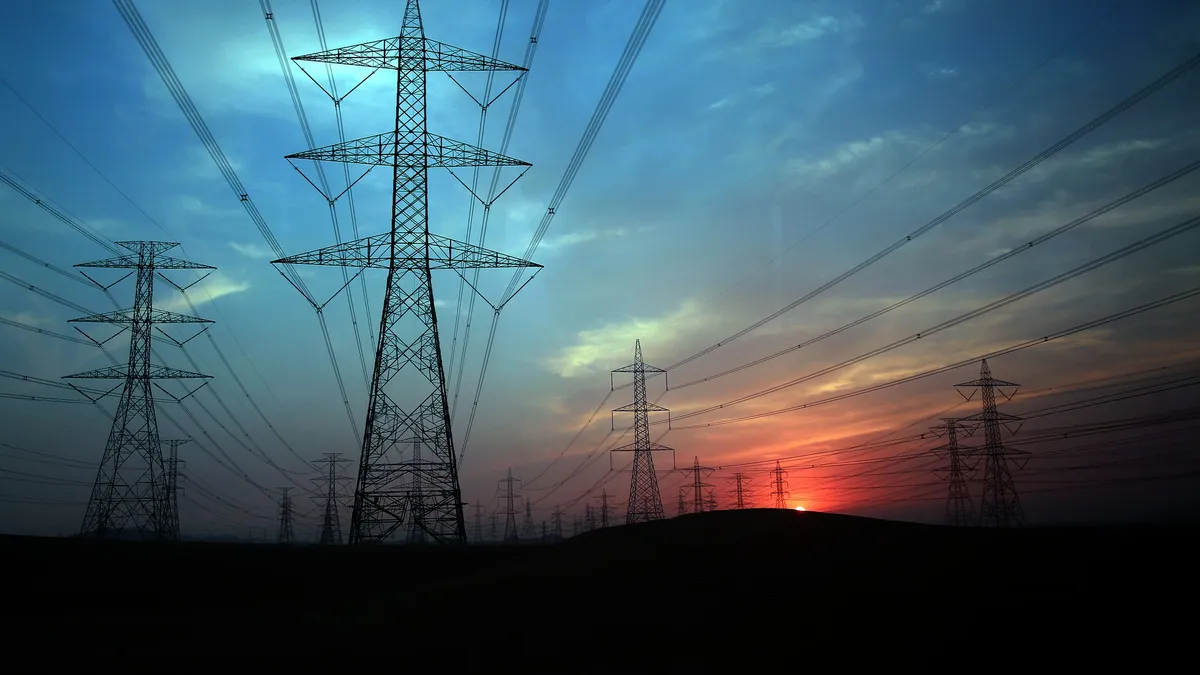UPDATE: March 14, 2022: Rejecting arguments by New York agencies and LS Power, the Federal Energy Regulatory Commission on Friday unanimously approved a proposal by New York's grid operator that allows incumbent utilities to build certain transmission upgrades planned by third-party transmission developers.
In a joint statement, Commissioners Allison Clements and Mark Christie said they shared concerns raised by the New York State Public Service Commission and New York State Energy Research and Development Authority about how the decision could affect customers' electric bills.
They noted the decision won't affect any cost-allocation or cost containment protections for consumers that could emerge in upcoming proposals to revise transmission planning, cost allocation and interconnection requirements.
"Hopefully soon we'll be releasing several proposed rulemakings addressing some of these issues, including the interconnection requirements, particularly interconnection as it relates to offshore wind," FERC Chairman Richard Glick said Thursday during the CERAWeek energy conference. FERC could issue final rules by early next year, he said.
Dive Brief:
-
The New York Public Service Commission (NYPSC) is leading a protest asking federal regulators to reject a proposal that would give incumbent utilities a path to building certain transmission upgrades planned by third-party transmission developers.
-
The state grid operator's right of first refusal (ROFR) proposal, which could give utilities a new income stream, would lead to unfair rate hikes, would fail to balance consumer and shareholder interests, and thwart the Federal Energy Regulatory Commission's efforts to inject competition into the transmission process, the NYPSC said in a Tuesday filing at the commission.
-
Consolidated Edison Co. of New York, National Grid, New York State Electric & Gas and other transmission owners told FERC on Tuesday the proposal provides a "transparent, clear, efficient, and timely process" that puts in place their right to build transmission upgrades through the state's "public policy transmission planning process."
Dive Insight:
The New York Independent System Operator's (NYISO) ROFR proposal comes as FERC is considering revising its rules governing transmission planning. Utilities want FERC to give them the right to build transmission lines in their footprints instead of opening those projects to a bidding process.
In New York, NYISO's stakeholders were at odds over the issue, leading the grid operator to ask FERC last year to clarify whether utilities in the state have a ROFR when upgrades to their systems are included in transmission proposals from other companies.
FERC in April unanimously said utilities in New York have a ROFR, but FERC Commissioner Allison Clements warned that the details of any changes to implement the ROFR could affect the NYISO's "public policy process," a procedure for planning transmission projects needed to meet the state's energy goals.
NYISO's Oct. 8 proposal to give utilities a ROFR for parts of another developer's project that are deemed transmission upgrades received only 42.4% support in one of the grid operator's committees, below the 58% threshold needed to approve a motion, the NYPSC said in a Tuesday filing at FERC.
The New York State Energy Research and Development Authority, a group of large energy users, the city of New York, Consumer Power Advocates, the Natural Resources Defense Council and the Sustainable FERC Project were part of the NYPSC's protest.
They had four main objections to the NYISO proposal.
First, it doesn't require utilities to meet cost containment pledges offered by the developers proposing the projects, they said.
Second, barring the NYISO from considering cost containment pledges for parts of a project that could be affected by a ROFR would undermine the competitive process, according to stakeholders opposing the proposal.
Third, letting transmission owners wait until the end of the public policy process to exercise a ROFR, after the winning proposals are selected, would discourage companies from taking part in the bidding process, they said.
Fourth, it is unjust for NYISO to assume a utility has triggered the ROFR if the utility doesn't formally reject it, they said.
New York's transmission owners urged FERC to approve the proposal, noting that NYISO's current rules, which lack ROFR provisions, are unjust.
Although the proposal failed to pass out of NYISO's Management Committee, the transmission owners said their ROFR rights are "fundamental" rights they considered when they agreed to turn over control of their transmission systems to the grid operator.
The proposal provides a rational process to implement the transmission owners' ROFR rights and won't interfere with the state's public policy transmission process, they said.
NYISO asked FERC to make a decision on its proposal by Dec. 16 to avoid disrupting the grid operator's ongoing public policy process.
Competition has generally worked well in New York for public policy transmission projects, according to Ari Peskoe, director of the Electricity Law Initiative at Harvard Law School.
However, the proposal marks the second recent attempt by New York transmission owners to monopolize transmission that will be built to facilitate the state's clean energy goals, Peskoe said in an email.
FERC in early September rejected a complaint and a related proposal from the New York transmission owners that they be allowed to earn a return on their investment for interconnection upgrades (EL21-66; ER21-1647).
"New York's policies are headed in the same direction, and they all point to a significant influx of clean energy over the next couple of decades," Peskoe said. "[The utilities] are trying to effectively tax clean energy policies by attempting to take a cut of the profits without any competition."














